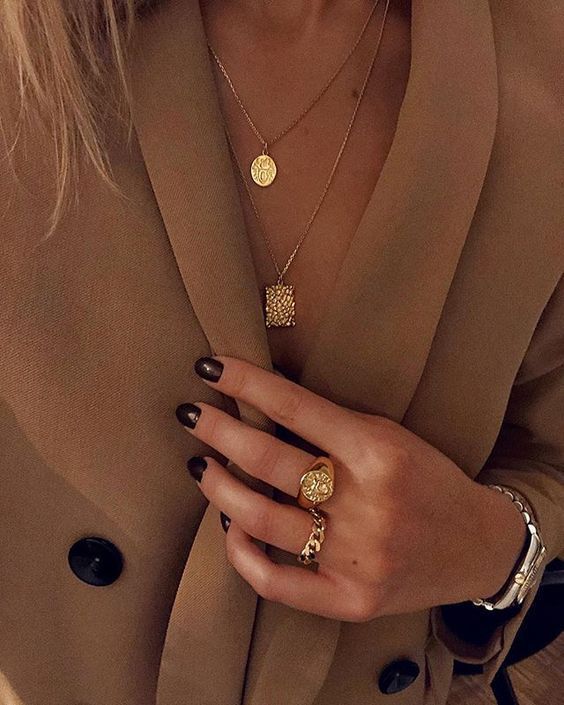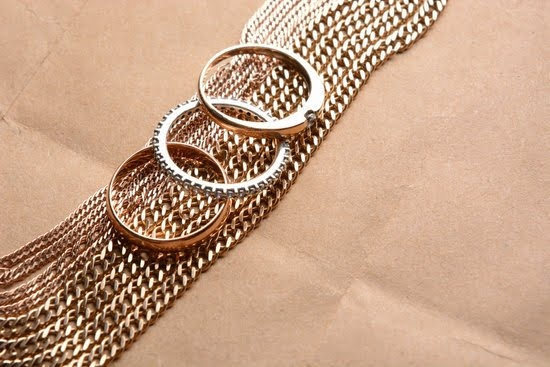Are you interested in learning how to string fine jewelry DIY with silk string? Silk string is the perfect choice for stringing delicate and valuable jewelry pieces, as it not only provides a beautiful and elegant look but also offers durability and flexibility. In this article, we will explore the significance of using silk string for stringing fine jewelry, as well as provide a comprehensive guide on how to do it yourself at home.
When it comes to fine jewelry, the choice of stringing material is crucial in ensuring the longevity and appearance of the pieces. Using silk string for stringing fine jewelry offers a range of benefits, including its strength, softness, and ability to elegantly showcase the beauty of the jewels. Whether you are a jewelry enthusiast or looking to start your own DIY project, using silk string can make a significant difference in the overall quality of your creations.
In the following sections, we will delve into the tools and materials needed for DIY stringing of fine jewelry with silk string. We will also discuss how to choose the right silk string for your specific type of fine jewelry.
Additionally, we will provide a step-by-step guide on how to effectively string your precious gems and pearls with silk thread, as well as offer tips and tricks for knotting and securing the silk string. Let’s embark on this journey of elevating your jewelry making skills by utilizing the beauty and functionality of silk string.
Tools and Materials Needed for Diy Stringing of Fine Jewelry With Silk String
When it comes to stringing fine jewelry with silk string, it is important to have the right tools and materials on hand to ensure a successful DIY project. Using silk string for stringing fine jewelry adds a touch of elegance and delicacy to the finished piece, making it essential to have the proper supplies for the job at hand.
Materials Needed
The first step in preparing for DIY stringing of fine jewelry with silk string is gathering all the necessary materials. This includes high-quality silk string in the desired color and thickness, as well as fine jewelry components such as beads, gemstones, or pearls. Additionally, you will need jewelry findings such as clasps, jump rings, and crimp beads to complete your design.
Tools Required
In addition to the materials mentioned above, certain tools are essential for successfully stringing fine jewelry with silk string. These tools include wire cutters for trimming the silk string, crimping pliers for securing crimp beads in place, and a beading awl or needle for threading the silk through small bead holes. It is also helpful to have a bead board or mat to lay out your design before stringing to ensure proper spacing and sizing.
Other Useful Supplies
Other useful supplies that can come in handy when working with silk string include clear nail polish or fray check to prevent fraying at the ends of the silk. Additionally, if you plan on creating more complex designs or patterns with your silk strung fine jewelry, having bead stoppers or thread protectors can help keep your design in place while working.
With these tools and materials on hand, you will be well-prepared for creating stunning DIY silk strung fine jewelry pieces.
Choosing the Right Silk String for Your Fine Jewelry
When it comes to stringing fine jewelry, choosing the right silk string is crucial to ensuring the quality and longevity of your pieces. Silk string is a popular choice for stringing fine jewelry due to its strength, smooth texture, and delicate appearance. When selecting silk string for your diy jewelry projects, there are a few key factors to consider.
Material and Thickness
One of the most important considerations when choosing silk string for your fine jewelry is the material and thickness of the string. Silk strings come in a variety of materials, including pure silk, nylon-silk blend, and polyester-silk blend.
The thickness of the string will also depend on the size of the beads or gemstones you plan to use in your jewelry. It’s important to select a silk string that is strong enough to support the weight of your beads while still maintaining a delicate appearance.
Color and Texture
The color and texture of the silk string can greatly impact the overall look of your finished jewelry piece. Consider the color of your beads or gemstones when selecting a silk string – you may want a neutral color that blends seamlessly with your jewelry components, or you may opt for a contrasting color to make a bold statement.
Additionally, be mindful of the texture of the silk – smooth textures are ideal for creating an elegant and refined look, while twisted or knotted textures can add character and dimension to your jewelry.
Length and Flexibility
The length and flexibility of the silk string are also important factors to consider when choosing the right string for your fine jewelry. Ensure that you have ample length to work with for knotting and securing your beads or gemstones. Additionally, select a silk string with enough flexibility to easily maneuver through small bead holes and create intricate designs without compromising its strength.
By carefully considering these factors – material and thickness, color and texture, length and flexibility – you can confidently choose the right silk string for your diy fine jewelry projects. With high-quality silk string as the foundation of your pieces, you can create stunning jewelry that exudes elegance and craftsmanship.
Step-by-Step Guide to Stringing Fine Jewelry With Silk String
Fine jewelry requires delicate handling to ensure that the materials used are not damaged during the stringing process. Using silk string for stringing fine jewelry is important due to its softness and strength, which helps in preventing damage to the beads or gemstones.
The natural fibers of silk also provide a luxurious touch to the jewelry, making it an ideal choice for creating elegant and high-quality pieces. In this section, we will provide a step-by-step guide on how to string fine jewelry DIY with silk string, ensuring that your creations are both beautiful and durable.
To begin stringing fine jewelry with silk string, you will need a few essential tools and materials. These include silk thread in your desired color and size, beading needles, scissors, bead tips or clamshell knots, and jewelry clasps. It is important to choose high-quality silk thread that is strong enough to hold the weight of the beads or gemstones you will be using. Beading needles should be fine enough to pass through the bead holes without causing any damage.
Once you have gathered all the necessary tools and materials, you can start by cutting a length of silk thread according to the desired length of your jewelry piece, plus a little extra for knotting and securing. Thread one end of the silk string through a beading needle, and begin adding your chosen beads or gemstones in the desired pattern.
When all beads are added, tie a secure knot at each end of the strung beads using clamshell knots or bead tips to protect the silk from wear. This step ensures that your fine jewelry will remain intact while being worn.
Tips and Tricks for Knotting and Securing the Silk String
When it comes to stringing fine jewelry with silk string, mastering the art of knotting and securing the string is crucial for a professional and polished finish. Here are some tips and tricks to help you achieve a beautiful and secure result:
- Choose the right technique: There are several different knotting techniques that can be used when working with silk string, including the overhand knot, surgeon’s knot, and double overhand knot. Experiment with each technique to find the one that best suits your jewelry design and provides the most security.
- Use tweezers or a bead reamer: When tying knots in silk string, it can be difficult to manipulate the tiny strands with your fingers alone. To make the process easier, use a pair of tweezers or a bead reamer to help guide the string through tight spaces and create tight, secure knots.
- Consider adding adhesive: For an extra layer of security, you may want to consider adding a small amount of jeweler’s glue or clear nail polish to your knots. This can help prevent them from unraveling over time and ensure that your jewelry remains intact.
By following these tips and tricks, you can master the art of knotting and securing silk string when stringing fine jewelry, ensuring that your creations are not only beautiful but also durable and long-lasting.
Adding Clasps and Finishing Touches to Your Silk String Strung Jewelry
When it comes to adding clasps and finishing touches to your silk string strung jewelry, there are a few important things to keep in mind. Clasps not only serve as the closure for your jewelry piece, but they also add a decorative element to your design. When choosing clasps for your silk string strung jewelry, make sure to select high-quality ones that complement the overall look of your piece.
One popular type of clasp used for silk string jewelry is the lobster claw clasp. These clasps are known for their durability and ease of use, making them a great choice for delicate silk string designs. Another option would be spring ring clasps which work well with fine jewelry as they provide a secure closure.
In addition to clasps, you can also add finishing touches such as jump rings or crimp beads to secure the ends of the silk string and prevent them from unraveling. Use pliers to close the jump rings securely and neatly. Alternatively, crimp beads can be used by simply threading them onto the end of the silk string before attaching a clasp. This will create a neat finish that is both secure and elegant, perfect for delicate fine jewelry pieces.
| Clasp Types | Description |
|---|---|
| Lobster Claw Clasp | Durable and easy to use, great for delicate silk string designs. |
| Spring Ring Clasp | Provides secure closure, works well with fine jewelry pieces. |
Care and Maintenance of Silk String Strung Fine Jewelry
Silk string is a delicate and luxurious material that is commonly used for stringing fine jewelry. When it comes to caring for and maintaining silk string strung jewelry, it’s important to handle it with care to ensure its longevity. Here are some tips on how to properly care for and maintain your silk string strung fine jewelry:
- Gently wipe down the silk string strung jewelry with a soft, dry cloth after each wear to remove any dirt, oil, or sweat that may have accumulated. This will help prevent tarnishing and keep the silk string looking clean and pristine.
- Avoid exposing your silk string strung jewelry to harsh chemicals, perfumes, lotions, and hairsprays as these can cause damage to the silk string and may degrade its quality over time.
- Store your silk string strung jewelry separately from other pieces to prevent tangling or scratching. Consider using individual pouches or soft-lined jewelry boxes to protect the delicate silk string from potential damage.
- It’s essential to periodically check the silk string for any signs of wear and tear such as fraying or stretching. If you notice any issues, it’s best to stop wearing the piece and have it re-strung by a professional jeweler to maintain its integrity.
By following these care and maintenance tips, you can ensure that your silk string strung fine jewelry remains in beautiful condition for years to come. Proper handling and storage will not only preserve the quality of the silk string but also maintain the overall appearance of your cherished pieces.
Inspiration for Silk String Strung Fine Jewelry Designs
In conclusion, learning how to string fine jewelry DIY with silk string can be a rewarding and fulfilling experience for jewelry makers. The use of silk string for stringing fine jewelry is crucial in ensuring both the durability and elegance of the final product. This natural material not only provides a beautiful drape and feel, but it also protects delicate gemstones and pearls from scratching or abrasion.
By following the step-by-step guide provided in this article, along with the tips and tricks for knotting and securing the silk string, jewelry makers can create stunning pieces that showcase their craftsmanship. Additionally, choosing the right silk string for your fine jewelry is essential in achieving the desired look and ensuring longevity.
Furthermore, adding clasps and finishing touches to your silk string strung jewelry will not only enhance its beauty but also provide functionality. Careful attention to detail during this process will result in professionally finished pieces that are ready to be worn and admired.
Lastly, by caring for and maintaining your silk string strung fine jewelry, you can ensure its longevity and continue to enjoy its beauty for years to come. Whether you’re a beginner looking to learn a new skill or an experienced jeweler wanting to explore new materials, creating fine jewelry with silk string is a truly inspiring endeavor worth pursuing.
Frequently Asked Questions
How Do You String a Silk Necklace?
Stringing a silk necklace involves threading silk cord through the drilled holes of beads, pearls, or pendants to create a beautiful and delicate jewelry piece. It’s important to use an appropriate needle for silk stringing to make the process easier and prevent fraying. When finished, knots can be tied securely at each end to hold the beads in place.
Can You Use Silk Thread for Beading?
Yes, silk thread is commonly used for beading due to its strength and smooth texture. Since it’s available in different thicknesses, you can choose the best size for your beads. Silk thread is also gentle on delicate gemstones and pearls, making it a popular choice for creating beaded jewelry that requires a more refined look.
Is Silk Cord Good for Bracelets?
Silk cord can be an excellent choice for bracelets due to its durability and softness. The smooth texture of silk cord is gentle on the skin and comfortable to wear as a bracelet material.
Additionally, the natural sheen of silk cord can enhance the overall appearance of the bracelet. Whether used alone or combined with other materials, silk cord can add an elegant touch to bracelet designs.

Welcome to my jewelry blog! My name is Sarah and I am the owner of this blog.
I love making jewelry and sharing my creations with others.
So whether you’re someone who loves wearing jewelry yourself or simply enjoys learning about it, be sure to check out my blog for insightful posts on everything related to this exciting topic!





